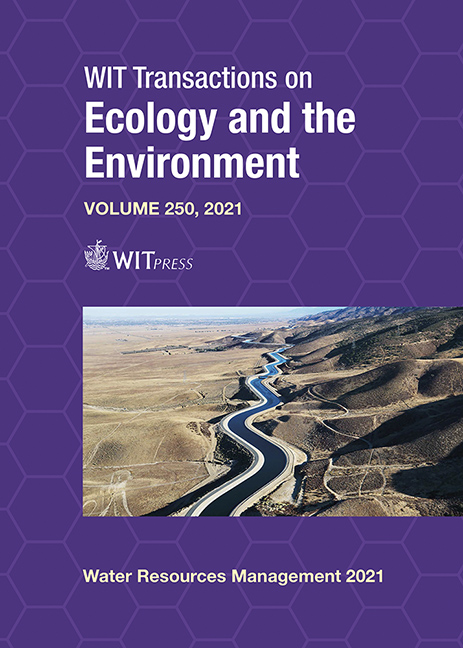USE OF AGRO-INPUTS IN AGRICULTURAL PRODUCTION AND WATER RESOURCES POLLUTION: A CASE STUDY OF CHU-MANGO IN THE MEKONG RIVER DELTA, VIETNAM
Price
Free (open access)
Transaction
Volume
250
Pages
12
Page Range
81 - 92
Published
2021
Size
367 kb
Paper DOI
10.2495/WRM210081
Copyright
Author(s)
TRUONG HONG VO TUAN KIET, PHAM THI NGUYEN, NGUYEN THI KIM THOA
Abstract
This paper employed the Environmental Impact Quotient (EIQ) model to determine the impact of chemical fertilizer and pesticide on farm workers, consumers and the ecology, as well as imply potential threats of Chu-mango cultivation on water resource pollution. The findings indicate that the number of root fertilizer (N–P–K) is 624.1, 542.5 and 443.5 kg/ha for seasons 1, 2 and 3, respectively. The nitrogen and phosphates misuse could leach into groundwater or enter via surface runoff into waterways. The ecology components in Chu-mango farming is the most vulnerable objective among three seasons. The field use EIQ in season 1 is the highest (1,058.56) in all of three seasons, then season 2 (747.06) and season 3 (592.34). Pesticides can move into water through direct application, runoff, and atmospheric deposition to contaminate water resources. One suggestion, therefore, is that the government could encourage mango growers to adopt good agricultural practices by training programs that raise their awareness of ecological protection. This policy would help to reject banned agrochemicals in mango production, which protects the water quality. Additionally, traceability code is needed, which would help farmers change the behavior of pesticide overuse, and is to carry out individual responsibilities for their products to communities. It not only reduces loadings of agricultural pollutants to water resources but also takes the potential trade benefit.
Keywords
Chu-mango, ground water, surface water, pollution





